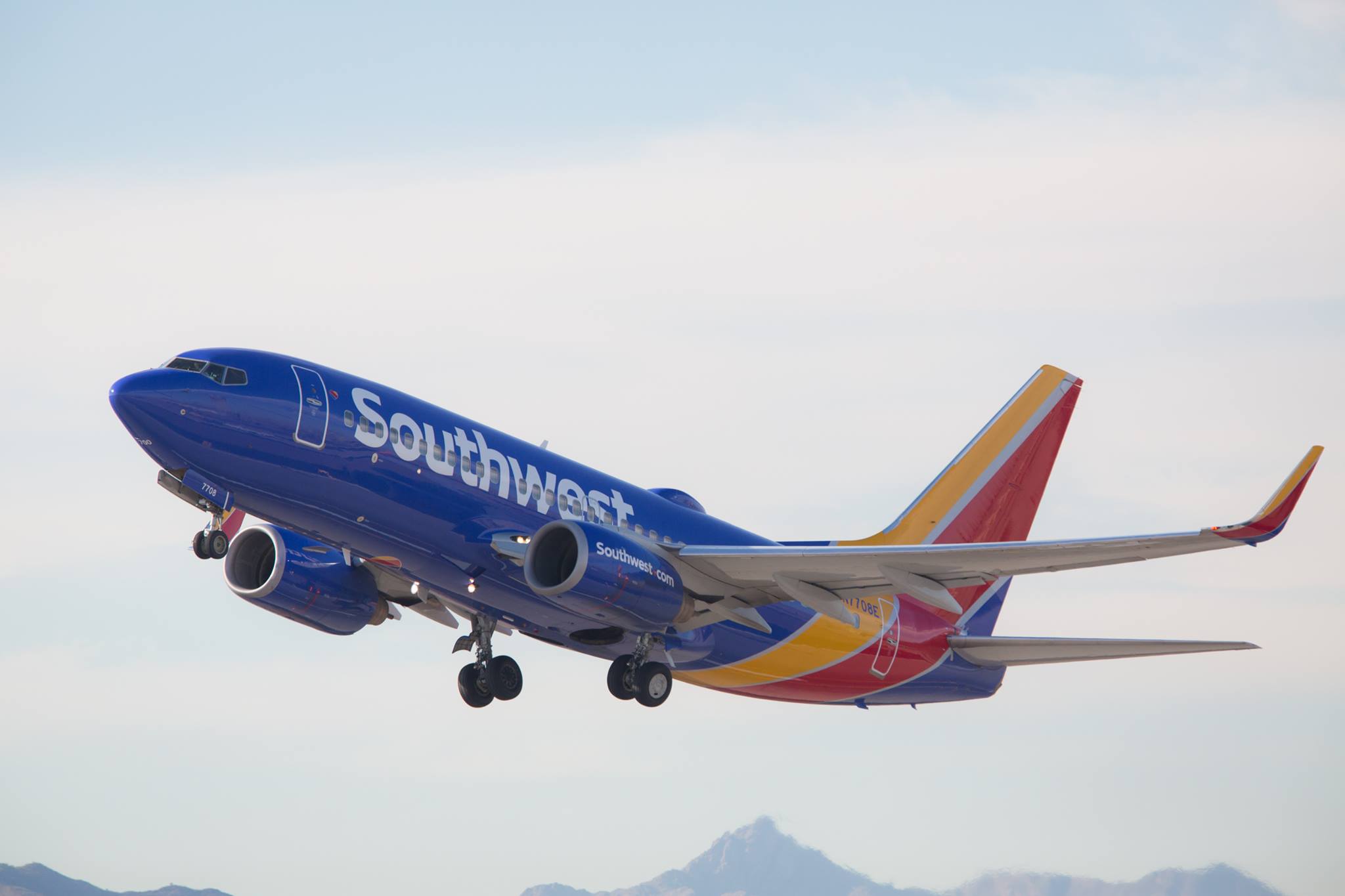Southwest Airlines (LUV 1.61%) has been offering a massive sale for the past week. It's great news for bargain-seeking travelers, who have been able to nab big discounts on popular routes for travel this fall.
However, for airline investors, it's not necessarily so wonderful. Many industry analysts have already been expressing concern that cheap oil is causing a loss of capacity and pricing discipline among the airlines. That could eventually lead to price wars that undermine the industry's newfound profitability. Does this crazy sale give more cause for concern?
These deals are huge
The front page of Southwest's website has been advertising one-way sale fares "as low as $73" for the past week or so. That's not particularly unusual, as airline sales go. In some cases, though, the deals have been much better than advertised.

Southwest Airlines is running a huge fare sale. Photo: The Motley Fool
Southwest has actually been offering one-way fares as low as $41 for fall travel on key routes such as Chicago-New York, Chicago-Philadelphia, and Chicago-Boston. From Chicago to all three Baltimore-Washington area airports, $44 fares are abundant.
These cheapest fares are only available on Tuesdays, Wednesdays, and Saturdays: the least popular travel days. However, there are also plenty of low fares in the $59-$69 one-way range on other days of the week.
These fares are money-losers
Even with the price of jet fuel having plummeted this year, Southwest isn't making money on these fares.

Source: Screenshot
I took advantage of this sale earlier this week to book an $82 roundtrip flight from Chicago to New York for a friend's wedding. But as my ticket breakdown shows, the base fare was only $50.04. The rest of the cost consisted of taxes and fees that Southwest has to remit to the airports and the federal government.
Thus, Southwest is actually keeping only $25.02 for each 725 mile one-way flight. On the other hand, Southwest's cost per available seat mile (excluding special items) was $0.1086 last quarter.
Assuming that Chicago-New York is an "average" market, this means Southwest would need to get $78.74 per seat for this flight to break even. (In reality, this flight probably has higher-than-average costs, as New York's LaGuardia Airport has some of the highest costs in the country.)
As a result, even if every single seat is filled, $25.02 fares won't go very far to covering Southwest's costs. And since Southwest doesn't charge for bags, its non-ticket revenue per passenger is much lower than that of other airlines.
What's going on here?
There are a few caveats to keep in mind here. The time between Labor Day and Thanksgiving is a seasonally weak period for air travel demand. Additionally, these cheapest fares are only available on the least popular days of the week for flying -- and even then, fares are much higher for certain flights: presumably those with fewer seats available.
Most importantly, airline revenue management systems are designed so that the average fare for a given flight is much higher than the cheapest ticket sold. Undoubtedly, Southwest's system is programmed to sell only a limited number of $41 fares on these flights before raising the price.
All that said, these bargain-basement fares are available for a lot of flights, which suggests that Southwest Airlines may have too much unsold inventory for off-peak days in the fall. Selling any seats for as little as $25 on a major route like Chicago-New York implies some level of desperation. Southwest Airlines also ran another giant sale just two months ago.
Based on the low prices Southwest has offered in this fall fare sale, it appears that the company isn't even covering its variable costs for some flights. If that's true, Southwest would make more money by cutting those flights on off-peak days.
Don't ignore this, but don't panic
Investors certainly shouldn't panic about this sale. It's difficult to extrapolate from prices on a few particular routes on off-peak days to market conditions more broadly. Sometimes airlines will offer steeply discounted tickets in order to generate customer excitement and brand awareness, not to maximize revenue in the short term.
Nevertheless, this is another sign that U.S. airline capacity may be rising too fast for demand, especially for off-peak times.
Investors should keep an eye on how unit revenue holds up this fall at Southwest Airlines and its main competitors. Several airlines have suggested that unit revenue declines are already bottoming out. If it turns out that this isn't the case, then airline stocks could face another wave of selling pressure this fall.






